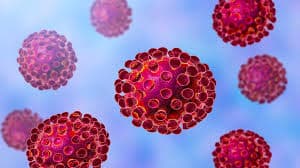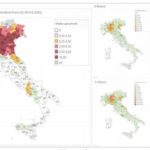
AIR QUALITY AND HEALTH in the times of Covid-19
by David Newman, President, World Biogas Association
The production and use of biogas, and in particular biomethane, is known to help improve air quality by offering a green alternative to fossil fuels as a source of electricity, heat and transport fuel, as well as by avoiding harmful gases going into the atmosphere through anaerobic digestion treatment of organic matter such as food waste, sewage and manure. Not only does biomethane support climate change mitigation, it also has important implications for people’s health – contributing towards achieving the UN Sustainability Development Goal No 3 of ensuring healthy lives.
As the world fights the Covid-19 pandemic, research has shown that the impact of the virus is particularly severe in the most polluted areas. Here, WBA president David Newman reviews the latest scientific findings about the connection between air quality, health, and Covid-19.
As we enter the month of May – the fifth month since China announced the existence of a new mutation of a contagious coronavirus – researchers and academics have now had time to review not just how the virus became a pandemic so rapidly, but where the virus has had the most fatal impacts.
I have been following this discussion and there has been an increasing number of papers, research articles and statements, linking the fatality and the spread of the virus to air quality. None of these yet prove this correlation with absolutely certainty, but the evidence is more than circumstantial.
The evidence indicates two links between the intensity of the spread and its fatality rate, and air quality. The first correlation is that poor air quality is already damaging our health. Therefore, we are weaker, more at risk, more susceptible to infectious diseases. Deaths from poor air quality are already in their millions each year across the planet. 90% of us breathe dirty air and some 7 million of us will die from illnesses directly linked to that- far more than those who will be killed by Covid-19 in 2020 (1). The data are from the WHO. To quote them, air pollution helps cause diseases such as “stroke, heart disease, lung cancer, chronic obstructive pulmonary diseases and respiratory infections, including pneumonia.” You do not need to be a genius to understand that the coronavirus will have an easier time infecting and killing people who are already weakened by one of those listed illnesses.
It is absolutely no coincidence that the city of Wuhan where the virus originated and first spread, is the 4th most polluted city in the world (2) according to the World Air Quality index. I am sure none of us even knew where Wuhan was until January 2020. The northern Italian region with the highest fatalities, east of Milan, is also the area with the worst air quality (Lombardy); the map below draws a direct correlation, but I would advise we take this evidence with caution at present.

The second piece of evidence which is quite worrying is that the virus is actually carried by air pollution – it sticks to PM10, PM25 particles and remains airborne until these fall to earth. As it is airborne, it is more likely to be inhaled. This suggests that where air pollution contains more Particulate Matter, there may be higher concentrations of virus circulating. This research is still in its early days and once again more data will be available as scientists have time to investigate.
Scientists also need to take other factors into consideration when they analyse the spread and the fatality rates of the virus- age, economic status, obesity, ethnicity, population density, exposure to risk, access to healthcare, are all key elements determining those. Italy has an elderly population, Lombardy is its most densely inhabited region, so air quality is just one factor. The evidence therefore is not yet conclusive, as I have said, but we will probably see future proof that when all other factors are taken into consideration, air quality will be a determinant. The Economist even suggests that preliminary analysis shows that cigarette smokers are less likely to suffer the illness, certainly not a recommendation to light up.
The case for clean air is not some abstract issue for the future- it is here and now. Those cities that have adopted clean air policies, using biogas for example as a fuel for transport systems, are likely to be among those that will have lower fatality rates. Be warned, this is just the first virus to be a pandemic, others will certainly follow, so clean air now is an imperative to save lives.
Listed for you in the footnotes, for your further exploration, are the articles I have consulted in writing this piece (3). Of course they are not exhaustive, nor are they totally conclusive. But they show that we ought to be concerned in any case because the correlation between poor air and health was anyway already established – even without the virus having to prove it again. And how.
Sources:
1. http://www9.who.int/airpollution/en/
2. https://www.iqair.com/world-air-quality-ranking
3.
https://www.scientificamerican.com/article/how-a-warming-climate-could-affect-the-spread-of-diseases-similar-to-covid-19/
https://www.theguardian.com/commentisfree/2020/mar/28/with-the-climate-crisis-and-coronavirus-bearing-down-on-us-the-age-of-disconnection-is-over
https://www.eenews.net/stories/1062893583
https://projects.iq.harvard.edu/covid-pm

